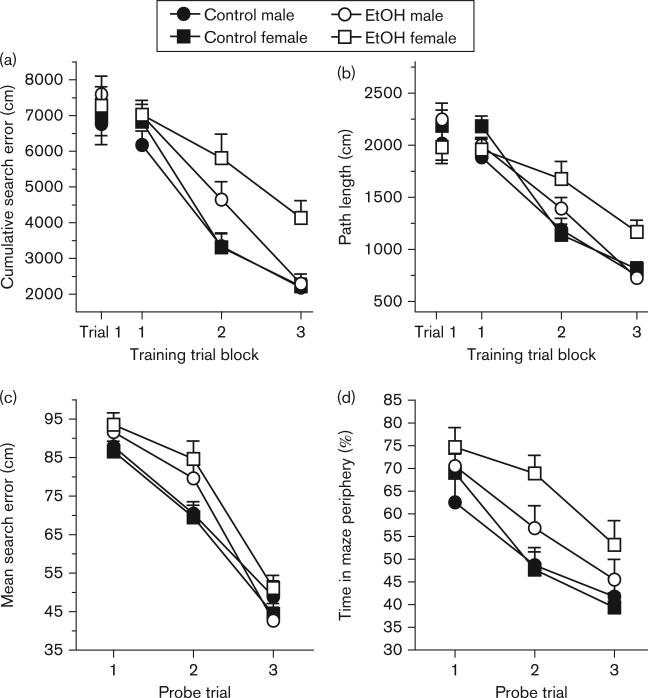Fig. 2.
Spatial reference memory performance on water maze training and probe trials. The cumulative search error (a) and path length (b) of control male (filled circles), control female (filled squares), ethanol (EtOH) male (open circles), and EtOH female (open squares) rats did not significantly differ in the first training trial. (a) The figure shows that over the course of training trial blocks there were significant main effects of EtOH exposure and of sex on cumulative search error. There was a significant interaction between EtOH exposure and trial blocks such that EtOH-exposed rats had higher cumulative search error over the course of training compared with controls. A significant three-way interaction between EtOH exposure, sex, and trial block was also found, such that EtOH-exposed females improved at a slower rate than EtOH male rats. (b) Mean (± SEM) path length across three training trial blocks, confirming the water maze performance as assessed by cumulative search error (a). (c) The mean (± SEM) search error of all groups decreased over the probe trials, indicating that all participants demonstrated improved spatial performance over time. There was a significant main effect of EtOH exposure on mean search error such that EtOH-exposed rats had significantly higher mean search error compared with control rats. (d) Rats’ percent time in the maze periphery (thigmotaxis) during interpolated probe trials. EtOH-exposed rats spent significantly more time in the maze periphery compared with control rats.

